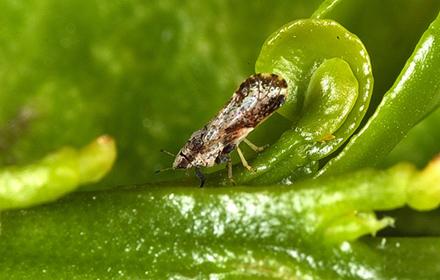Plant Detectives Corner a Citrus Killer

Citrus greening (or Huanglongbing) disease has cost Florida's citrus industry $1. 3 billion in losses since its discovery in the State in 2005. Today, citrus greening can be found in every citrus-growing county in Florida and throughout other citrus-growing States, including California.
An insect called the “Asian citrus psyllid” spreads the bacterium (Candidatus Liberibacter asiaticus) that causes the disease. This happens when psyllids feed on citrus trees. Affected fruit are green, misshapen, and bitter. Although harmless to humans, the fruit is unsuitable for fresh market or juice.
A team of ARS and Boyce Thompson Institute researchers in Ithaca, NY, may have found a weak link in the citrus-greening disease cycle, however. Before it can be transmitted to citrus trees, the bacterium must first breach the psyllid's gut cells to multiply.
The researchers found that the insect's adult stage resists such cellular breaches by an act of cell suicide, undercutting the bacterium's chances of being transmitted. The team is now hunting for the details of that mechanism of resistance in hopes of unlocking ways to make nymph psyllids just as inhospitable—and less harmful to citrus trees.
Related Information
Article: Research Reveals a New Direction for Halting the Citrus Greening Epidemic



